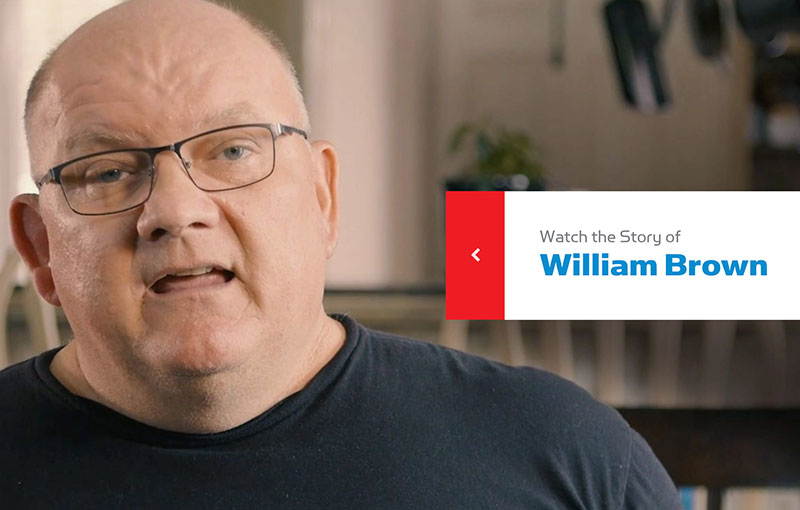Thriving with ADHD: A Guide for Families

Parenting a child with ADHD can feel overwhelming, but it doesn’t have to be. October is National ADHD Awareness Month, making it the perfect time to explore how families can better understand this condition and support their child’s unique needs.
What is ADHD?
ADHD, or Attention-Deficit/Hyperactivity Disorder, is a neurodevelopmental condition that affects millions of children. It can continue into adulthood, making it important to understand and manage early. ADHD is typically characterized by a combination of inattention, hyperactivity, and impulsivity, which can impact a child’s performance at school, home, and social settings.
While every child occasionally has trouble sitting still or paying attention, kids with ADHD experience these behaviors more frequently and to a greater extent. This can make it difficult for them to focus on tasks, follow instructions, or remain calm in situations where it’s expected.
Types of ADHD
There are three main types of ADHD, and a child may show symptoms of one or a combination:
- Predominantly Inattentive – Children with this type often have trouble focusing, appear forgetful, and are easily distracted. They may have difficulty finishing tasks or paying attention during conversations.
- Predominantly Hyperactive-Impulsive – These children tend to be very energetic and impulsive, often interrupting others or having trouble staying seated when needed. They might fidget constantly or act without thinking.
- Combined Type – This is the most common type, where children display significant symptoms of both inattention and hyperactivity/impulsivity.
Signs and Symptoms of ADHD
Recognizing the signs of ADHD early can help parents take action to support their child. Below are some common behaviors associated with each type:
Inattentive Presentation
Children who display inattentiveness often:
- Have difficulty focusing on tasks, particularly those that aren’t highly engaging.
- Make careless mistakes in their schoolwork or overlook details.
- Seem like they’re not listening when spoken to, even in direct conversations.
- Struggle with staying organized, frequently losing track of school assignments or activities.
- Are easily distracted by external factors like noises or movements.
- Often misplace items like books, pencils, or other school materials.
- Avoid activities that demand prolonged concentration, such as homework or studying for exams.
Hyperactive-Impulsive Presentation
On the other hand, children showing hyperactive-impulsive tendencies may:
- Constantly move around, fidget, or have trouble sitting still during quiet times.
- Act out by running or climbing in situations where it isn’t suitable.
- Struggle with waiting their turn, particularly in group settings or games.
- Frequently interrupt others during conversations or activities.
- Talk excessively, even in moments where they are expected to be silent.
- Act impulsively without considering the consequences, leading to spontaneous decisions.
It’s important to remember that every child is different, and ADHD symptoms can vary widely. Some children may show signs of both inattention and hyperactivity.
Causes and Risk Factors
The exact cause of ADHD isn’t fully understood, but research suggests that genetics play a significant role. Other factors, such as brain development, premature birth, and exposure to toxins during pregnancy, may also contribute.
ADHD is not caused by poor parenting, sugar intake, or too much screen time, although these factors can sometimes make symptoms more noticeable. Parents need to understand that ADHD is a medical condition, not a behavioral choice.
How is ADHD Diagnosed?
Diagnosing ADHD requires a comprehensive evaluation by a healthcare professional. Pediatricians, psychologists, and psychiatrists use several tools to assess a child’s behavior. This may include interviews with the child and parents, behavior rating scales, and observations of the child in different settings.
Because many of the symptoms of ADHD are common in other conditions, such as anxiety or learning disabilities, it’s important to rule out other possible causes before making a diagnosis.
Treatment and Management of ADHD
Once diagnosed, ADHD is typically managed through a combination of treatments tailored to the child’s needs. These may include:
- Behavioral Therapy – This form of therapy helps children learn to manage their behavior by developing coping strategies and improving their social skills. Parents can also benefit from behavioral training to learn how to support their child effectively.
- Medications – Stimulant medications, such as Adderall or Ritalin, are often prescribed to help children with ADHD focus better. Non-stimulant medications may also be an option for some children. Working closely with a doctor is essential to find the right medication and dosage for your child.
- Educational Support – Many children with ADHD benefit from accommodations at school. These can include extra time on tests, modified homework assignments, or sitting in a quieter part of the classroom to reduce distractions.
Parents should work closely with their child’s teachers and school staff to develop an individualized education plan (IEP) or 504 plan, ensuring the right support is in place.
Tips for Parents Managing ADHD
Parenting a child with ADHD can be challenging, but these tips can help create a supportive and structured environment:
- Establish Routines – Consistent routines provide structure and help your child know what to expect. Clear, predictable schedules can make transitions between activities smoother.
- Set Clear Expectations – Be specific about what behaviors you expect, and use positive reinforcement when your child meets those expectations. Focus on rewarding good behavior rather than punishing mistakes.
- Use Visual Reminders – Visual aids, like charts or checklists, can help your child stay on track with tasks and responsibilities. For example, a morning checklist might include brushing teeth, packing a backpack, and putting on shoes.
- Limit Distractions – Create a quiet, organized space for your child to work on homework or complete tasks. Reducing noise and limiting access to electronic devices can help them stay focused.
- Encourage Physical Activity – Regular physical activity helps children with ADHD burn off excess energy and can improve concentration. Activities like sports, swimming, or even a short walk can be great outlets.
Supporting a Child with ADHD in Social Situations
Children with ADHD often struggle with social interactions, but there are ways to help them build better relationships:
- Teach Social Skills – Role-playing social scenarios, like taking turns or sharing, can help children with ADHD practice their interactions with others.
- Foster Friendships – Encourage your child to spend time with children who are patient and understanding of their challenges. Structured activities, such as sports or clubs, can provide opportunities for socialization in a more controlled environment.
When to Seek Help
If you’re concerned that your child’s behavior may be linked to ADHD, don’t hesitate to seek professional advice. With October being ADHD Awareness Month, it’s an ideal time to learn more about the condition and how early diagnosis and intervention can make a significant difference in managing symptoms.
Remember, there’s no one-size-fits-all approach to ADHD. Finding the right combination of strategies will take time, patience, and the support of healthcare professionals. Understanding ADHD and how it affects your child can empower you as a parent. By using the right strategies and seeking professional help when necessary, you can give your child the tools they need to thrive.
For any medical emergency, our dedicated team of skilled doctors and nurses is ready to assist you. Visit our state-of-the-art facility, open 24/7, to receive the highest level of care whenever you need it.
Sources:
“What is ADHD?” American Psychiatric Association, https://www.psychiatry.org/patients-families/adhd/what-is-adhd
“Attention-Deficit / Hyperactivity Disorder (ADHD) in Children,” John Hopkins Medicine, https://www.hopkinsmedicine.org/health/conditions-and-diseases/adhdadd
“Attention-Deficit/Hyperactivity Disorder,” National Institute of Mental Health, https://www.nimh.nih.gov/health/topics/attention-deficit-hyperactivity-disorder-adhd
“Symptoms of ADHD,” Centers for Disease Control and Prevention, https://www.cdc.gov/adhd/signs-symptoms/index.html
“Attention deficit hyperactivity disorder,” NHS, https://www.nhs.uk/conditions/attention-deficit-hyperactivity-disorder-adhd/diagnosis/
“Treatment of ADHD,” Centers for Disease Control and Prevention, https://www.cdc.gov/adhd/treatment/index.html


